Sage Cohen's Blog
February 14, 2023
Love poems for you
Happy Valentine’s Day!
On a holiday that invites us to attend to love, I appreciate how the intention of a collective field can amplify whatever we are holding or healing.
There are so many ways to love and be loved.
Self-love. God-love. Child-love. Beloved-love. Dog-love. Nature-love. Stranger-love (but not the creepy kind!). After-love.
I am sharing with you today some poems that cover this ground. For me, each one offers a resting place of grace. I hope you find something beautiful that stretches your heart wider.
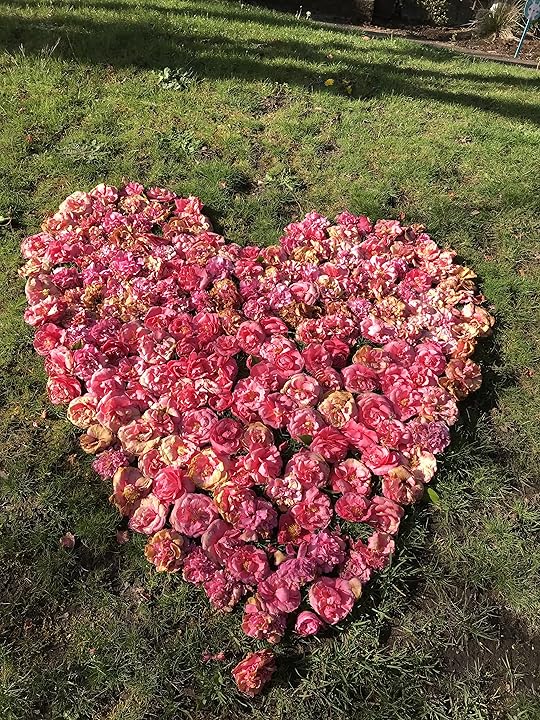 Gate C22 by Ellen Bass
Gate C22 by Ellen Bass
Touch Me by Stanley Kunitz
Resignation by Nikki Giovanni
Snow, Aldo by Kate DiCamillo
God Says Yes to Me by Kaylin Haught
Small Kindnesses by Danusha Laméris
Good Bones by Maggie Smith
The Waitress by Sage Cohen
The Summer Day by Mary Oliver
Love After Love by Derek Walcott
Failing and Flying by Jack Gilbert
(I stumbled upon the heart above in a neighbor’s yard. It is composed of fallen camellias.)
Rumi said, “Lovers don’t finally meet somewhere. They’re in each other all along.” May all that is in you source all you are seeking. Today and every day.
==
Did one of these poems resonate with you? Do you have any you’d like to add to the love-fest? I’d love to hear in the comments below!
The post Love poems for you appeared first on Sage Cohen.
September 24, 2021
You’re all I need to get by
It happened by accident. I was walking my puppy, Bodhi. The night before, I’d put the man I love on an airplane that would take him to a new, truer life that did not include me. I’d been haunted by this song since hearing it in the movie CODA weeks before. When I noticed myself humming it nonstop, I found the original online, put in my ear buds, and was swept away by song.
YOU’RE ALL I NEED TO GET BY.
The streets evaporated as Bodhi and I were suddenly strutting down the yellow brick road of duet. I sang the male lead, the female lead, the chorus. I was melody, harmony, unity. I was everyone who had ever left me, I was all the parts of me that had abandoned myself. We all came back together in the higher truth of song, the gorgeously mended patchwork of my heart. I was singing myself whole.
YOU’RE ALL I NEED TO GET BY.
I swung the poop bag over my head like a lasso, sauntered and sashayed down the sidewalk. Bodhi jumped and tugged at the leash, overcome at his good fortune that I was behaving so badly. We romped like that for a full 45 minutes — a wild, emoting human and leaping, galivanting dog alive with song. Through the veil of history, I linked arms with Marvin Gaye and Tammi Terrel. We sang our hearts out all the way home.
I’d forgotten that this is what self-soothing looked like for me in childhood. Playing cassette tapes in my little pink tape recorder in my pink bedroom, I’d belt out Donna Summer songs, The Beatles, and “Ease on Down the Road” from The Wiz while improvising dance routines for an audience of stuffed animals.
With so much of what once pleased me stripped away in this life chapter, I’d stumbled into the truth I knew intuitively when I was young: a simple duet can change everything.
YOU’RE ALL I NEED TO GET BY.
We’ve all lost so much. We’ve all suffered and struggled. What if we were already equipped with everything we need to recover? Is there a song you could sing to honor the empty places, to begin to integrate what’s been broken? Is there a crazy dance you could do that makes you laugh? That helps you grieve? That alarms the neighbors? A poem or story you could write to help move it on through? Or maybe there’s some forgotten practice from your childhood that you might resurrect?
I honor all the parts of you that have been scattered and invite them back to this moment. I believe that you are all that you need to get by.
==
I’d love to hear about the practices that are helping you heal, integrate, transform, and triumph in the comments below!
The post You’re all I need to get by appeared first on Sage Cohen.
October 25, 2020
What they can never steal from us
In late September, my son’s friend Will got a supercool mountain bike for his 12th birthday. A few weeks later, a man stole it from Will as he was biking with friends.
Our parent community was dumbfounded and aggrieved that an adult could inflict such suffering on a child. Will’s parents reported the loss to the police, registered with the requisite bike theft databases, and posted on Nextdoor.com, where a public outcry accumulated fast and furious in the comments.
As he tried to comprehend what had happened to his friend, my son’s belief that adults’ collective purpose is to keep him safe split its seam. This newly-minted middle schooler was initiated into a new truth about the human experience: bad things can happen at any moment, even at the hands of adults.
I could leave you there, with my son’s grief and his friend’s. With the fact that there is little certainty in life, despite our careful planning, organizing, and preventative protections. With the painful truth that not every adult is trustworthy, that not every trail is safe for play. That there are people so desperate for money or food that stealing a bike might feel like their only option.
But then this happened.
Will’s parents created flyers about the stolen bike. They prepared bags of socks, masks, granola bars, and hand sanitizer. They canvassed the trail where the bike was taken, talking to the many people living there in tents. They offered their gifts of compassion and hope along with the flyer and request for help.
This trail-side community was as shocked and angered as the online chorus that an adult would steal a child’s bike this way.
“We’ll have it back to you in 24 hours,” they said. And that’s exactly what happened.
 Through this extraordinary series of events, an extended web of community that might never have mingled was stitched a bit closer together in the collective effort it took to solve the problem of Will’s stolen bike.
Through this extraordinary series of events, an extended web of community that might never have mingled was stitched a bit closer together in the collective effort it took to solve the problem of Will’s stolen bike.
I like to tell my students—and now my son—“If you don’t like the way the story ends, keep writing.” That’s what Will’s family did. They didn’t let the story end with their son being a victim robbed of his bike. Instead of contracting in anger, they expanded in generosity. The people they engaged with responded in kind.
This is resilience. Finding a way to let what hurts us stretch our hearts and our capacity to have compassion for ourselves and each other. Trusting that this is the natural course of things.
Even if Will’s bike hadn’t been recovered, his family had taken responsibility for their recovery. I believe this was the pivotal choice. As a result, Will (and his fortunate friends) saw that when bad things happen, empowering choices can be made. No one can rob us of these choices.
Will’s lost-then-found bike is a good reminder that when we are willing to stay with ourselves through a difficult experience, anything is possible. As long as we are alive, the story keeps unfolding, and we get to choose whether we focus on the bike being stolen, or what we’re going to do to get it back. We can focus on the frightening man who took it, or the generous people who returned it.
Our point of focus doesn’t change the facts. But it can have a mighty influence on how we feel about the facts – and what we choose to do and say next.
===
By the way, whenever you’re ready, here are four ways I can help you produce, polish, and publish your best work:
Get your free copy of my Focus + Finish Blueprint for Writers
You’ll complete a one-page strategic plan to work smarter and complete the writing that matters. Click here for yours.
Grab your Poem Revision Cheat Sheet.
Follow 10 simple steps to polish your poems for publication, so you can revise with confidence. Get your free download here.
Create 5 publication-ready poems.
I offer a close craft review to help you revise and finish five poems—plus learn more about your strengths and opportunities as a poet. Get all the details!
Work with me privately.
If you’re a serious writer focused on finishing or publishing an important piece of work, I can help guide both accountability and craft to make it happen. Just hit reply, put “Launchpad” in the subject line, and I’ll get back to you with more details.
The post What they can never steal from us appeared first on Sage Cohen.
October 7, 2020
On being thrown out of the nest
“To be fully alive, fully human, and completely awake is to be continually thrown out of the nest.” — Pema Chodron
These are awake times, as Pema Chodron describes it. Fear, uncertainty, loss and grief are throwing so many of us out of the nest. So much is at stake.
I want to share with you a line from Wallace Stevens’ poem A Rabbit as King of the Ghosts that I’ve been reciting like a kind of mantra for the past 25 years.
Fat cat, red tongue, green mind, white milk
Why this line? Because it keeps me grounded in the opportunities of observation. It rocks me in iambic rhythm. It’s a kind of poetry blankie.
A lifetime of writing poems has taught me there may be only one thing in life we have complete control over, and that is our attention. When I manage to remember this, I can choose whether to focus on what I lost or what I learned from it. I can choose to rest in the beauty of the world by devoting myself to the unfurling of each next, right word.
White dog, red boy, green field, fat mind
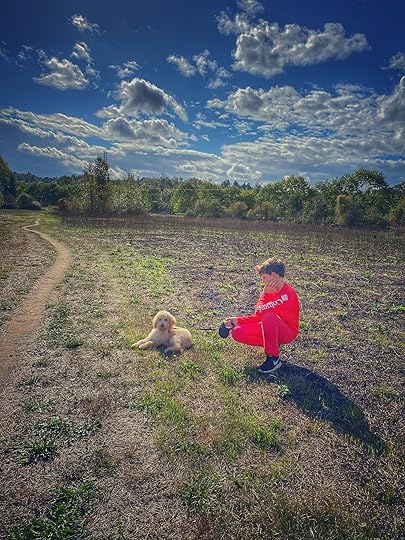
One observation at a time, I write myself into alignment with sound, image, sun, and sky. Each word can hold me as long as a breath before letting go.
This doesn’t change the fact that I’ll be thrown out of the nest today, and again tomorrow. Words can’t spare me the fall. Yet paradoxically, when I give my attention to the blank page of groundlessness, writing becomes more like sails. Or wings. I discover how to move with life’s currents and find my place among its agonies.
How does writing help you navigate uncertainty? I’d love to hear in the comments below.
Wishing you soft landings!
P.S. Whenever you’re ready, here are four ways I can help you produce, polish, and publish your best work:
1. Get your free copy of my Focus + Finish Blueprint for Writers
You’ll complete a one-page strategic plan to work smarter and complete the writing that matters. Click here for yours.
2. Grab your Poem Revision Cheat Sheet.
Follow 10 simple steps to polish your poems for publication, so you can revise with confidence. Get your free download here.
3. Create 5 publication-ready poems.
I offer a close craft review to help you revise and finish five poems—plus learn more about your strengths and opportunities as a poet. Get all the details!
4. Work with me privately.
If you’re a serious writer focused on finishing or publishing an important piece of work, I can help guide both accountability and craft to make it happen. Just hit reply, put “Launchpad” in the subject line, and I’ll get back to you with more details.
The post On being thrown out of the nest appeared first on Sage Cohen.
May 28, 2020
Pandemic productivity hack #2: Reconsider what matters
These are challenging times. Many of us are living, working, and creating in unexpected, new ways. With a third of Americans now showing signs or clinical anxiety or depression according to the Census Bureau, it’s more important than ever to work and play and rest in ways that fill us up. Last week, I proposed lowering your standards. Today, I want to offer a few questions to put this possibility into practice.
What can I let go?
If your pre-pandemic writing project (or publishing goal) no longer feels relevant and you are struggling to keep going, I propose that you stop. Shelve it for now. You can always come back to it later.
You are a different person than you were a few months ago, with different needs and concerns. Letting go of everything non-essential can make more space for all of the new variables of life.
Some consider unfinished work a sunk cost. I call it compost. Every piece of writing you’ve tackled has fortified to your root system of wisdom and skill from which your future writing will spring.
Let me be clear: I’m not saying that finishing doesn’t matter! Just that we all want work that matters enough to finish. It’s ok to pivot! Especially now.
When we give ourselves room to renegotiate, we stay accountable to what’s most alive in ourselves and our writing. (David Whyte shows you how in this poem.)
What fills me up?
Letting go of what is no longer imperative gives you more room for what matters now.
I’m seeing a trend with my clients and students who are shelving their “safe” material and getting a little looser and more experimental. They’re willing to say things they’ve never said and create in ways that seemed unapproachable before.
From risking vulnerability to tackling edgy subject matter to simply diving into the craft they’ve been “planning to get around to someday”, these writers are awakening in surprising ways as they give themselves permission to enter fresh territory.
What could you try that raises the stakes? What might put you at your growing edge? What is your undeniable, irresistible YES? What can’t you afford to delay any longer?
How much is enough?
Time is very different these days. For many of us, it’s hard to distinguish one day from the next without the variety of activities that once gave shape to our lives. Some of us have far more togetherness than we ever bargained for—and others far more loneliness. However you were measuring “enough” previously, I propose that it’s time to recalibrate the scale (much lower)!
Less time for your creative life now?
Mantu Joshi wrote The Resilient Parent in two-hour sessions every Saturday over the course of two years. Whatever increments of time you have can be more than enough—if you just stay with it.
Could you wake 10 minutes earlier to write? Listen to audio books on craft while cooking? Generate dialogue or metaphors on your evening bike ride? Take a photo every day to keep your pilot light of attention glowing? Capture acorns—little seeds of ideas—that you’ll return to when life is more spacious?
Or maybe you have more time on your hands than you ever bargained for?
Writers are often shocked to discover how confronting it is having all day to write. If this is true for you, inventing constraints is a great way to calm down and keep moving forward. Try doing just one 50-minute writing sprint daily at your prime time. Once that practice is solid, you can add in a second sprint. And so on.
The best way to imprint the rhythms we want is to notice and celebrate. This fun worksheet makes sufficiency visible as you track your daily steps and successes!
Expecting less can be a path to appreciating more. Doing less can be a surprising path to accomplishing more of what matters.
What’s important to you now? I’d love to hear!
The post Pandemic productivity hack #2: Reconsider what matters appeared first on Sage Cohen.
May 21, 2020
Pandemic productivity hack #1: Lower your standards
Life has changed for many of us—rapidly and radically. You may be overwhelmed by grief, facing unexpected swaths of free time, or consumed with far greater demands of family and work.
Whatever your life is like today, chances are good there’s something new to solve. Your old systems and strategies may not apply. And whoever you thought you were just a few months ago—as a writer, parent, contributor, or human—may have left the premises.
I want to be the kind of person I have come to expect of myself. And yet, someone new is emerging from that woman’s ashes in this time of concentric living, working, parenting, homeschooling, and creating. This version of me is not pretty or polished. She’s got gray roots and a sad son and a lot of potato chips and Netflix hours under her belt.
Today, when a single coherent hour of writing is the best I can do, I am communing with the spirit of William Stafford. In an interview with Bill Moyers, the poet once spoke of his daily routine of writing a poem very early every morning. When Moyers asked, “What if what you write isn’t any good?” Stafford replied with his signature wit and wisdom, “Then I lower my standards.”
If ever there was a time to lower our standards, this is it. We don’t need to be any good at any of it. We just need to keep showing up for the writing we love to do. And letting that be more than enough.
Writing can keep us connected with ourselves and resourced for everything else our lives and our world demand of us right now. Whatever you need to do to stay there, with yourself on the page, is worth doing. I suggest focusing on progress, not product, not perfect. Maybe it would even be a good time to choose a “pandemic project” – something you can start and finish quickly. Something that serves as your little lifeboat in words. So you can say whatever feels most necessary to express right now. What I want for you is this:
blessing the boats
BY LUCILLE CLIFTON
may the tide
that is entering even now
the lip of our understanding
carry you out
beyond the face of fear
may you kiss
the wind then turn from it
certain that it will
love your back may you
open your eyes to water
water waving forever
and may you in your innocence
sail through this to that
==
May you write yourself into that loving wind. May you move deep into your truest waters. May you sail through this to that.
The post Pandemic productivity hack #1: Lower your standards appeared first on Sage Cohen.
February 5, 2020
Are you procrastinating enough?
As we face the blank page of a new year full of good intentions, I am wondering if you might set your procrastinating sights a little higher. Because, let’s face it, we all know you can do better.
In fact, why not set a timer for 15 minutes each time you sit down to write—or a half-hour, even—and make sure you dedicate that time to anything and everything but writing? Come on, I know you can waste more time if you just try a little harder…said no writing guide ever. Until now!
I know, I know: You have big goals and important work to do. And procrastination is bad. But here’s the rub. Leaning into the “bad” habits that we resist can actually help us blast through them more quickly. Wasting time becomes boring when you plan for it! All of its subversive power deflates, your resistance relaxes, and you can get on with the work that matters.
My great triumph in this arena happened when writing my first nonfiction book, Writing the Life Poetic. After negotiating nine months to write the first draft, I had a pretty good idea that I’d flop around for a while, telling myself “I can’t do this,” avoiding starting, and generally working myself into a non-productive frenzy.
So, I planned for it. I scheduled only “freak-out time” for the entire first month. And freak out I did, as I binge-watched multiple seasons of Six Feet Under. By the time I’d vicariously lived through more death and dying than any human should reasonably ingest in a four-week period, I’d sated my bad-mouthing inner critic. She knew I was no good, and I’d proven her right, filled her with television, and sent her off satisfied.
Then I got to work. In the next eight months, I followed a disciplined writing schedule that was shoe-horned into a life chapter that also included running a full-time business, getting married, walking two dogs, petting three cats, and giving birth to my son.
When I met with the Vancouver chapter of Willamette Writers last week, we had some good laughs about the power of procrastination when we put it to good use. Perhaps you could make make wasting time your new success strategy, too?
Next time you find yourself dawdling, escaping, or doing what you said you wouldn’t, try leaning in and really letting yourself have it for a little while. Sooner or later, you’ll exhaust the part of yourself that is not inclined to cooperate. Then, you’ll get back to work.
The post Are you procrastinating enough? appeared first on Sage Cohen.
September 21, 2019
The Art of Asking for It
There’s so much in life that’s out of our hands. One variable we are (mostly) in charge of is ourselves.
If you want to turn what stalls you into what accelerates you, adjusting your attitude and approach can take you there.
Let’s start with something you are likely to have plenty of: dissatisfaction.
Most of us express our dissatisfaction by complaining. This keeps us stuck there, in whatever isn’t working for us. And it puts the listener (who didn’t delight us) on the defensive.
Here’s the secret to turning that ship around.
A complaint is just a desire in disguise.
Buried deep in every pile of dissatisfaction is a seed of desire. When you dig a little deeper to find that desire, you can transform complaints into irresistible requests that increase your odds of getting what you want. This free worksheet shows you how.
Think about it. Which of these scenarios would likely inspire you to cooperate? Your colleague whines that you’ll ruin their reputation by missing your deadline (as you have before). Or, your colleague approaches you with excitement and gratitude about how meeting your deadline can help you both succeed.
No one is motivated by others’ disappointment. Enrolling others in your desires puts everyone in the power position. And the good news is every complaint can simply be re-purposed into a request that takes you there.
I made this free worksheet to help you move from dissatisfaction to desire in three simple steps. So, you can get more of what you want!
P.S. Want more tools, strategies, and practices for getting more of what you want?
You can apply for my Fierce Accountability Circle starting in October!
P.P.S. Want more poetry or healing?
There’s still time to enroll in the Fierce Poetry Workshop starting in October and The Crucible of You: Write Yourself from Hurt to Healing in January.
The post The Art of Asking for It appeared first on Sage Cohen.
July 15, 2019
Where did you put the baby?
A few years ago, I attended a family science camp at Camp Westwind over a long weekend with my son, Theo, and then-boyfriend, Mark. The small cluster of families met up in the parking lot and together took a small boat across a small body of water where we disembarked and trudged together up a sandy hill into camp.
Theo was eight then, and his sister (child of my coparent and his wife) had just been born. An extrovert, my son struck up a conversation with a woman who writes guide book about Oregon, and they discussed the geological and cultural history of his homeland all the way into camp.
When dinner time came, Theo joined his new friend and several other families to continue their conversation at their table. As Mark and I sat at a neighboring table deep in our own conversation with some new friends, I delighted in my son’s freedom to be loosely connected to us but making his own social choices.
At the end of dinner, four of the women Theo had been sitting with approached and stood in a semicircle around me. The vibe was odd—disapproving. Awkward.
“We heard you have a newborn baby,” said the guidebook writer, her voice thick with judgement, “and we’re wondering where she is this weekend.”
It was pure dream material. Like showing up to class without pants or unprepared for the test. I was being told I had an infant I’d somehow forgotten about and misplaced. I stood there in shock for a moment, trying to make sense of this information.
Then it hit me: Grace! They were talking about my son’s new sister—his favorite, new topic of conversation. He must’ve been telling them how excited he was to be a big brother, and they’d assumed the baby to be mine, assumed us to be a two-parent family instead of the four coparents we actually were, with two whole siblings we refused to define as half.
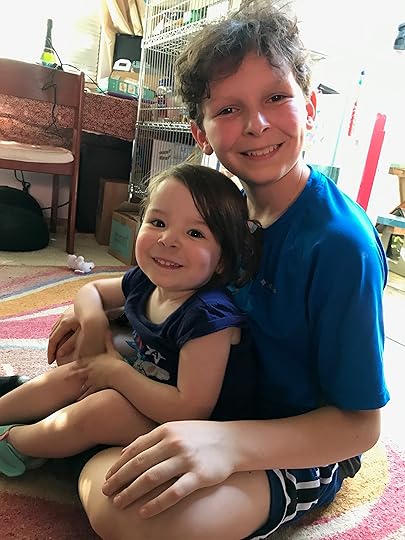
“Oh, you’re asking about my son’s sister,” I laughed. “She’s not mine.”
The women stood there as immobilized and confused as I had been a moment before.
“What do you mean she’s not yours?” another woman asked.
“I mean, she’s the child of Theo’s father and stepmother,” I replied. “I did not give birth to her, she does not live with me, and I do not take her on vacation.”
There was a collective exhalation. Then came the next false assumption.
“Oh, ok, well then, how long have you guys been married?” said the guidebook author, gesturing to Mark. She was clearly trying to find some new norm about me to settle into that aligned with her paradigm of “family”.
“Oh, we’re not married,” I responded.
“But you three all look so happy and comfortable with each other,” she replied.
“Yes,” I said, “And we pulled that off even without a marriage—or living together. And my son has a sister who thrills him, even though his parents divorced and his father remarried. It’s amazing what’s possible in families when we choose to be happy with each other,” I responded.
That seemed to stump everyone. The other mothers shuffled away a little sheepishly. I was out from under the mommy microscope.
But I was fascinated. These people had misread Mark, Theo, and me as a family of origin. They had misread Theo’s sister as my child. They had layered us with all of their stories and assumptions about what makes a happy family. And that’s how we’re all operating most of the time.
I started to notice my own tendencies to assign stories to strangers (and familiars) based on my own bias and life experience. This came up for me recently as I listened to a podcast where an artist I follow was interviewed about her husband’s sudden death at age 40—leaving her pregnant and with a three-year-old.
Knowing of this event when it happened the previous year, I’d superimposed my own ideas of what this loss meant to this woman – emotionally, practically, financially. When I heard her tell her story, I discovered every one of my assumptions was completely wrong. I was reminded yet again that we never know what’s happening inside another person’s heart, relationship, or family.
What’s become interesting to me over the years is how the stories we tell about other people reveal who we are more clearly. Whether I am full of judgement or empathy for others, I remind myself that really, I have no idea what’s going on for them. And they are just mirrors for how I feel about myself.
Here’s a quick video about the process I use to transform judgements about others (positive and negative) into insights about myself. So that I can defuse my triggers, grant others the grace they deserve, and better welcome myself.
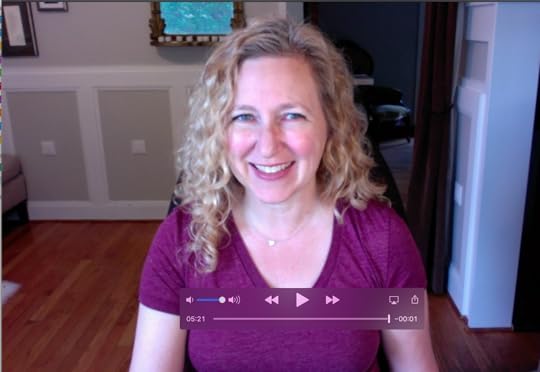
What truths about yourself have you excavated when you find yourself judging others? I’d love to hear about your discoveries in the comments below.
The post Where did you put the baby? appeared first on Sage Cohen.
June 20, 2019
How to tell the stories you want to live by
At my Aunt Linda’s wedding about 25 years ago, my cousin Shari gave a toast that I will never forget. It went something like this.
John, Linda’s new husband, was relentlessly positive and approving of Linda. To the point that Shari suspected he was a fake. After all, how could anyone be so universally satisfied by another person? No matter what my aunt cooked, for example, it was the best meal John had ever eaten. And so on.
Then one night, Linda burned dinner. There was no question about it: the meal was ruined. Shari was on edge. She was sure this was the moment John would be exposed as a fraud. What could he possibly find redeeming about this meal?
But then this happened.
John took a bite of the burned main course and, without missing a beat, said to my aunt, “Linda, this is the best salad I’ve ever eaten.”
He skipped right over the part of the meal that didn’t work to something he could truly be pleased with. He found the detail that aligned with his core truth: that my aunt was simply a source of endless delight.
This story changed my life.
I saw with such clarity—thanks to John’s wonderful gift for loving my aunt and Shari’s wonderful gift for storytelling—that we get to choose where we put our attention, and how it makes us feel. John simply didn’t focus on the burned dinner. This wasn’t a lie, it was a choice. He invested his attention and his feedback on the part of the meal that made him happy—the part that reinforced his love story for his beloved, the chef.
Every one of us has this same choice, in every moment.
We can decide the storyline we want to live by, then focus on the evidence that supports it and simply ignore the rest. As we speak and write about this evidence over time, it eventually becomes integrated with our being as our new and more accurate version of reality, identity, and relationship.
This is how I rewrote myself on the other side of divorce. After a year of deep grief, I decided that the only way my son was going to have the kind of life I wanted for him was for me to invest in a new story about his father—and our family. Inspired by my uncle John, I decided I’d have eyes only for what I appreciated about my coparent. From that day forward, I gave him only feedback about what I truly appreciated. The more I looked for things to appreciate, the more I found.
As a result, remarkably, within weeks of establishing this new practice, we had a new family system. One that shifted us from our “disappointer” (him) and “disappointed” (me) roles to “satisfier” and “satisfied” roles.
I’m not saying that there weren’t challenges or conflicts along the way. What I’m saying is that I didn’t hang onto them for a moment longer than I had to. Instead, I’d focus on my gratitude that my coparent answered the phone, that he considered my request, that he did what he thought was right…whatever it was I could possibly, authentically appreciate…that’s what had my attention. And I believe he has held me with the same compassion and grace.
As a result of many years of this practice, our family system today is a coherent and collaborative tribe of parents: my coparent, his wife, and me. We are all so close that my son feels he has one family in two homes. We take vacations together, we celebrate holidays together, we sing karaoke together, and generally just enjoy each other’s company. Here we all are celebrating my son’s fourth grade graduation last week.
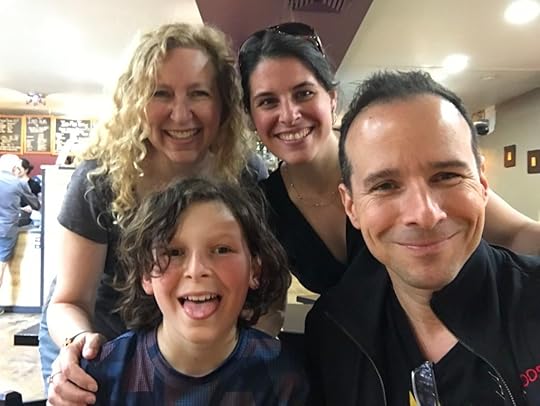 This concept is simple. But the execution can feel like warrior’s work—depending on how big a story you set out to rewrite. I am here to say that it can be done.
This concept is simple. But the execution can feel like warrior’s work—depending on how big a story you set out to rewrite. I am here to say that it can be done.
Want to try it out? Here’s a quick coaching video that can help you experiment with this kind of transformational storytelling. (It’s free—just click to start watching immediately.) I’d love to hear about your experience in the comments below!
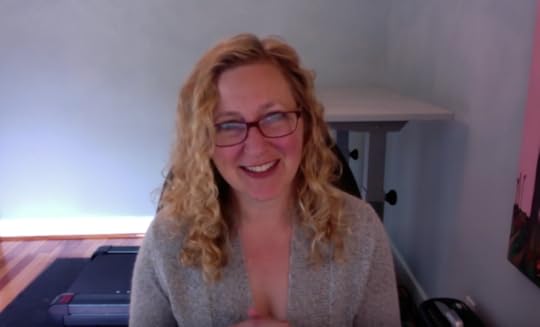
The post How to tell the stories you want to live by appeared first on Sage Cohen.



